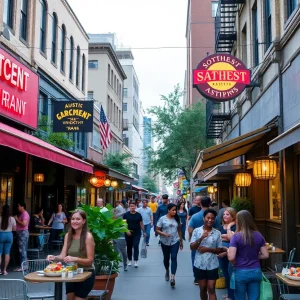Despite 20% Vacancy Rate, Conversion of Austin Office Buildings to Residential Spaces Remains Unfeasible
Austin, despite having a staggering 20% vacancy rate in its office buildings, finds the conversion of these numerous empty spaces into much-needed housing a far-off possibility. A series of exploratory trips to other markets initiated by Brad Stein, president of Intracorp Texas, confirmed that transforming office spaces into residential accommodations would necessitate massive and costly modifications.
Office and Residential Spaces – A Mismatched Puzzle
Stein explains, “housing space and office space are two very different puzzle pieces that don’t fit together without considerable and expensive alterations.” While cities with a lower demand for new development may find this type of conversion feasible, the reality for Austin appears to starkly differ unless the office vacancies surge to a much higher 50%, or even more.
Some of the key conditions that could potentially favor office-to-residential conversion include office properties that are 30 to 40 years old, requiring significant renovations; properties with floorplates not exceeding 15,000 square feet, which would provide the necessary window access and egress for residential requirements; and high office vacancy rates, eventually leading owners to let go of the distressed assets at prices comparable to or below their land value.
No Incentives for Conversion
Yet, with Austin’s development boom happening over the last 10 to 20 years, most owners would prefer to wait and weather the economic downturn rather than engage in costly transformations or accept potential losses. “The offices and the areas where people want to live, I think they’re just too new… And I don’t think that the owners and the lenders of these office spaces right now… are really willing to take a huge loss,” observed Stein.
Challenges and High Costs of Conversion
Apart from economic factors, the disparity in space needs for offices and residences presents substantial hurdles to conversion. The centrally located bathroom banks and heating and air conditioning systems suitable for office use would not work for residential purposes unless a dormitory-style accommodation is envisioned. This necessitates the installation of new water lines and individual HVAC units, incurring additional expenses.
Potential Interest in Equitable Transit-Oriented Development Areas
Hannah Rangel, vice president of built environment for the Downtown Austin Alliance, suggested that equitable transit-oriented development areas could potentially pique interest in office-to-residential conversions due to their accessibility to transit and possible incentives, primarily in case of class B and class C properties and low-rise office parks. However, she stressed that the most likely course of action for downtown Austin and many other areas would be the incorporation of mixed-use spaces, short-term conversions for creative and lifestyle businesses, or complete renovations to fulfil the maximum floor area ratio.
While recognizing the sobering reality that large-scale office-to-residential conversions may remain a distant dream for Austin, the collective insights provided by key stakeholders in the real estate and development sectors suggest a multi-faceted approach in tackling the city’s office vacancy issue and housing shortage simultaneously.









